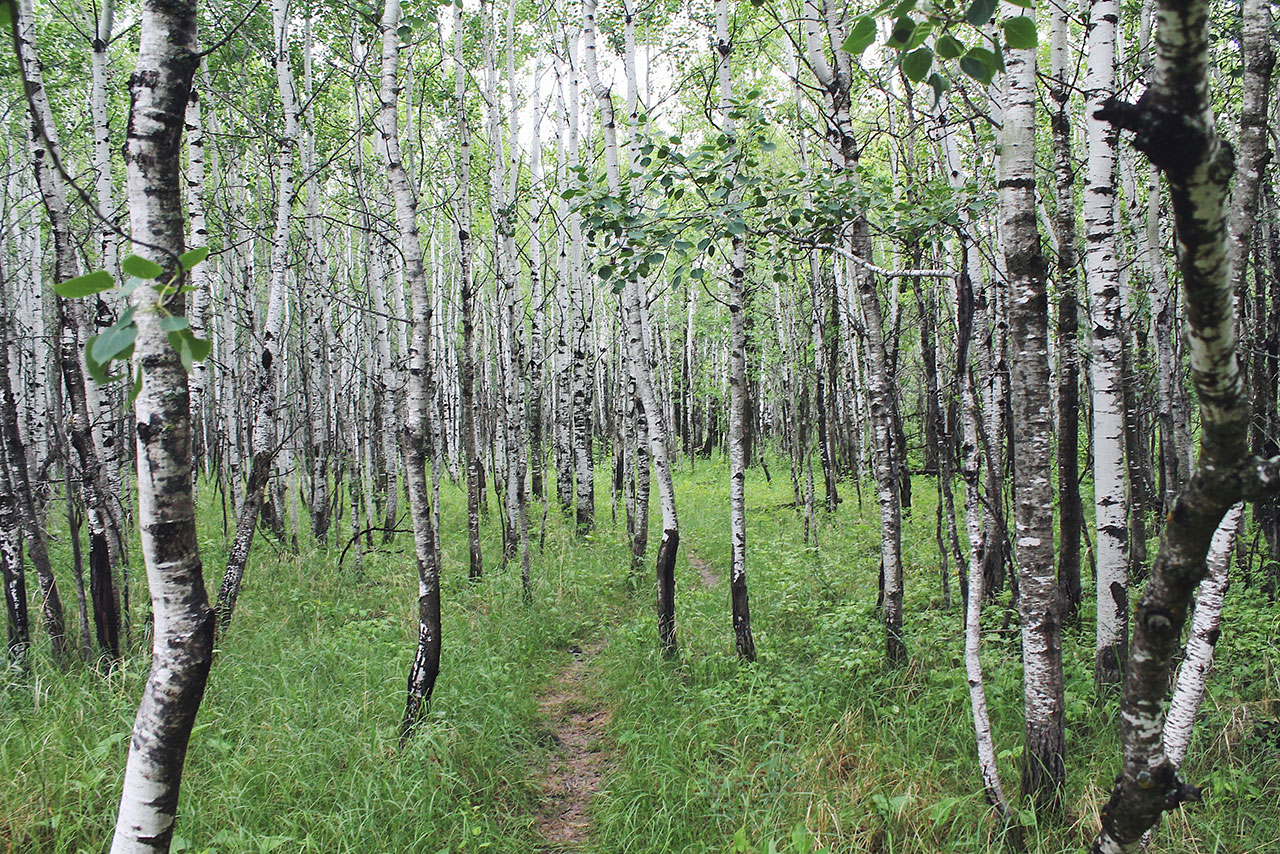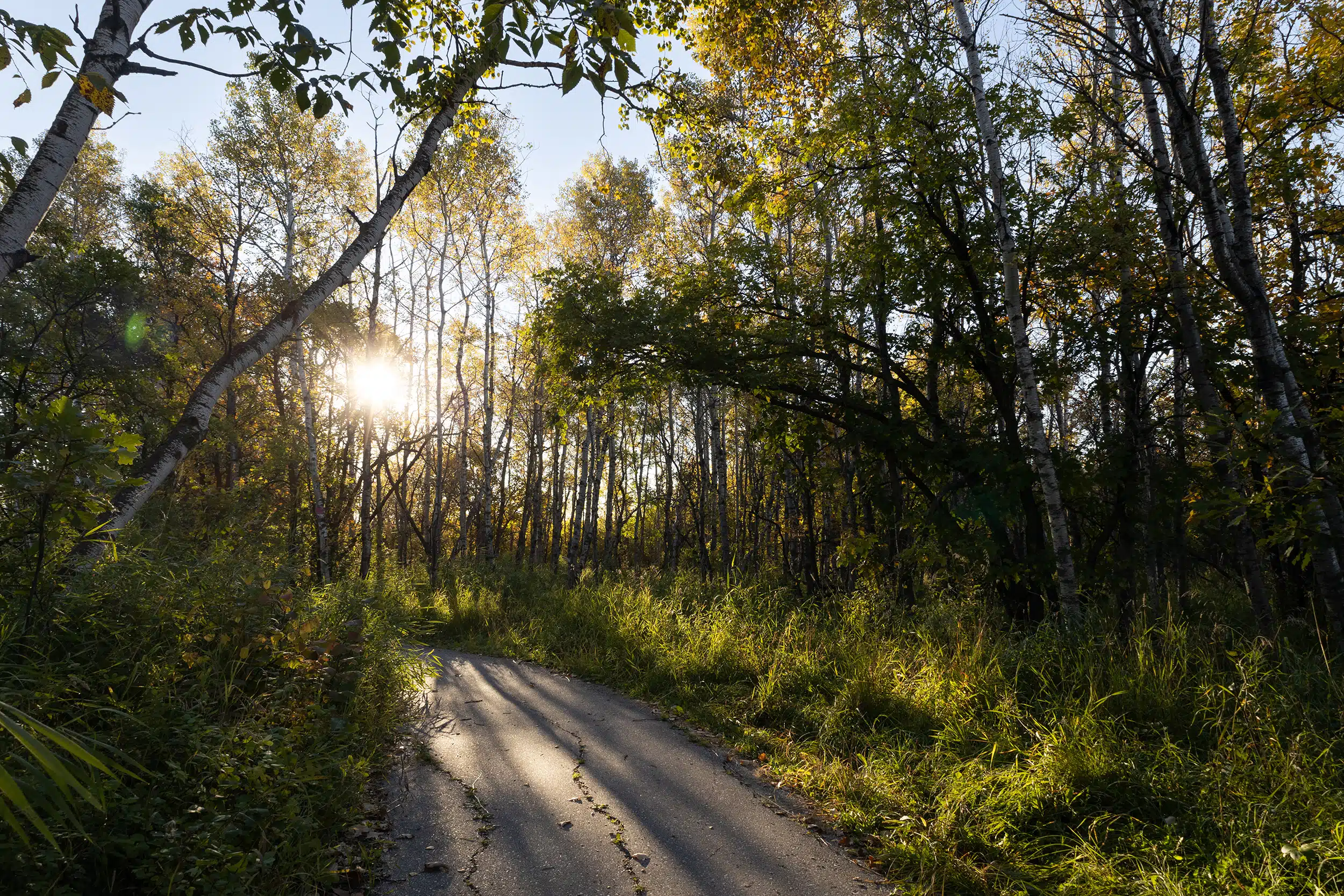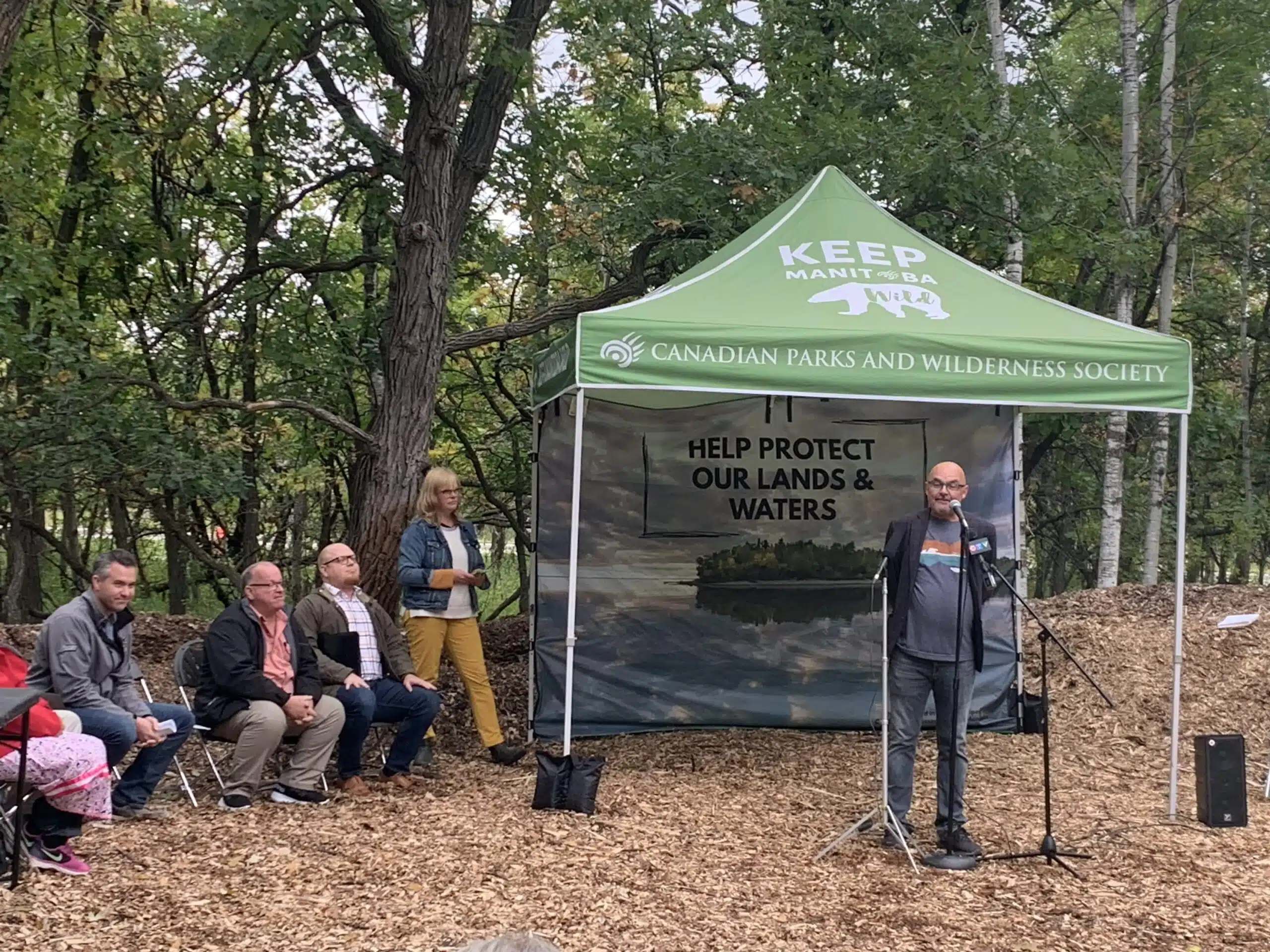Winnipeg already trails the nation in public greenspace. Without your support we could fall even further behind: a simple 2/3 vote of the city council is all it would take to open Assiniboine Forest to development.
The federal government has an initiative to establish National Urban Parks across Canada. The City of Winnipeg agreed with the federal government to establish a National Urban Park.
The location has not yet been announced. CPAWS is promoting the Assiniboine Forest and additions along the Hart to be considered part of or all of the new park. It could also be extended along the TransCanada trail to include lands proposed for a National Urban Park along the Seine River to Pointe Douglas.
A committee has been formed to explore the opportunity that includes Treaty One, the Manitoba Metis Federation, Parks Canada, the Government of Manitoba, and the City of Winnipeg.
Check out the Assiniboine Forest and Potential Additions Map.
Why Protect Assiniboine Forest and Why Now?
Assiniboine Forest, located near Naawi Oodena and nestled between River Heights and Tuxedo, is a location that we believe should be considered as part or all of Winnipeg’s National Urban Park.
According to the Friends of Assiniboine Forest, Assiniboine Forest is the largest urban forest in Canada. And yet a simple 2/3 city council vote is all it would take for the forest’s 711 acres to be opened up to developers.
We’ve seen what happens to treasured city parks that lack permanent protection. Just 16 kilometres from Ottawa’s Parliament Building, the once pristine Gatineau Park has been carved up by housing development, shopping centres, and the creation of new roads.
CPAWS Manitoba has been in dialogue with the Charleswood Rotary Club's Friends of Assiniboine Forest for several years about the best ways to manage and protect the forest.
A huge opportunity presented itself in August 2021 when the city entered into an agreement with the federal government to establish a National Urban Park. The location has not yet been announced.
Assiniboine Forest is the natural choice for Winnipeg’s first National Urban Park. The federal designation will create jobs for park maintenance, management and interpretive programs.
The forest could also be expanded by using federal funds to acquire neighbouring undeveloped lands, adding much-needed natural space to our city.
We urgently need to expand greenspace in Winnipeg in order to support the physical and mental health of residents and to mitigate the impact of climate change. Just 6 percent of Winnipeg is public parkland compared to a national average of 9 percent.
Your Voice is Needed!
Help us safeguard this important forest in Winnipeg.
Use our simple tool to sign a letter to protect Assiniboine Forest as a National Urban Park.
What Makes Assiniboine Forest Special
According to the Friends of Assiniboine Forest, Assiniboine Forest is the largest urban forest in Canada with 711 acres of aspen and oak forest, restored tall-grass prairie and wetlands. It is home to white-tailed deer, coyote, songbirds, nesting waterfowl, and 256 species of plants.
The forest is largely undeveloped, aside from 18 kilometres of multi-use trails designed to help residents explore and appreciate its beauty.
Some of those trails were originally roads which were cut in the forest in the early 1920s. Plans for development were shelved due to the Great Depression and the forest remained largely undisturbed for decades.
Local residents began working to protect the forest in the 1960s. They succeeded in 1973 when the City of Winnipeg designated Assiniboine Forest as a municipal nature park.
The Charleswood Rotary Club has helped steward the forest since 1991, raising over $600,000 to support project such as:
- cleaning up an old municipal waste disposal site
- creating a new wetland area
- developing a parking lot and front gate
- building and maintaining an elevated boardwalk
- installing interpretive and directional signage
- and mitigating invasive thistle plants
The club also worked with city officials to develop a comprehensive 355 page planning study to provide clear direction for future forest management.
Park Expansion Opportunities
A significant opportunity would be exploring whether adjacent natural lands to the south could be acquired to expand the new park, thereby adding much-needed green space to the city.
The restoration of other adjacent, but developed, lands is worth exploring. Such as converting agricultural land back to natural prairie.
An exciting possibility would be to explore opportunities to expand the new park by connecting it to the Little Forks Proposal via the Transcanada trail.
Federal Investment
A National Urban Park would bring significant federal investment to:
- Reduce the resources required from the city's budget to manage the forest.
- Better manage the forest, improve accessibility, and advance reconcilation.
- Create new jobs, including management and interpretive programs.
- Expand Winnipeg's tourist attractions and gain promotional support from Parks Canada.
Reconciliation
Indigenous peoples have stewarded this territory for thousands of generations. National Urban Parks must be designed, established, and managed in the spirit of reconciliation. At minimum, this entails Indigenous leadership and knowledge being actively and equitably involved in all stages of park development and administration.
The Forest’s proximity to the Naawi Oodena provides an excellent opportunity for its future residents to utilize the area for cultural and recreational purposes and to take part in its stewardship. One possibility is a co-management model that includes the leadership of Treaty One and the Manitoba Metis Federation.
Climate Change and Clean Air
Governments around the world are spending billions to green their cities in response to deadly heatwaves like the record-breaking 2021 heat dome that killed 619 people in the Vancouver area.
Trees and parks help lower temperatures and combat the heat-island effect of asphalt and buildings which trap and radiate heat while blocking potentially cooling winds.
The number of extreme heat days in Winnipeg is expected to more than double in the coming years, according to the Climate Atlas of Canada which predicts the mean number of days with temperatures over 30 degrees celsius will rise to at least 30.5 days a year compared with a mean of 14.3 days from 1976-2005.
Green spaces don't only combat the heat impacts of climate change. They also help to clean the air of toxic pollutants, reduce the impact of flooding from increasingly intense storms, and absorb and store carbon dioxide.
The city's OurWinnipeg 2045 plan includes “a commitment to increasing the public reserve land within the City of Winnipeg by taking steps to add another 1,000 acres of public park space in addition to the already existing public reserve lands” to ensure that green space is preserved and enhanced for future generations.
Mental and Physical Health Benefits
There is a wide array of evidence that shows spending time in nature improves mental and physical health, boosts immunity and reduces risk of disease.
Parks also help to build community and provide free spaces for families to gather.
Most people don’t need a meta-analysis of scientific research to tell them they feel good when they’re out in the woods or watching birds swoop over a marsh at sunset.
However, some may be surprised at the many ways in which spending time in nature can support mental and physical health. Studies have shown it can:
- Reduce stress
- Improve sleep
- Ease symptoms of depression and anxiety
- Increase happiness and social connectedness
- Boost your immune system
- Lower blood pressure
- Support pain management
- Combat obesity and diabetes
- Reduce symptoms of attention-deficit/hyperactivity disorder
- Improve eyesight
- And so much more
Healthy forests, lakes and wetlands are also working to protect our physical health even when we’re not out in nature. They clean our air, filter our water and act as a protective shield against the worsening impacts of climate change.
Designating Assiniboine Forest as a National Urban Park would not only preserve this national treasure for future generations of people and wildlife, but would support the physical and mental well-being of our citizens.
Learn More:
- Read CPAWS National Urban Parks Policy Recommendations (March 2022).
- Option for a Assiniboine Forest/Little Forks National Urban Park
- Learn more about the benefits of trees in urban spaces-Tree of All Trades
Related Articles

Winnipeg Will Sign Biodiversity Pledge

5 Reasons Why Assiniboine Forest Should Become a National Urban Park

